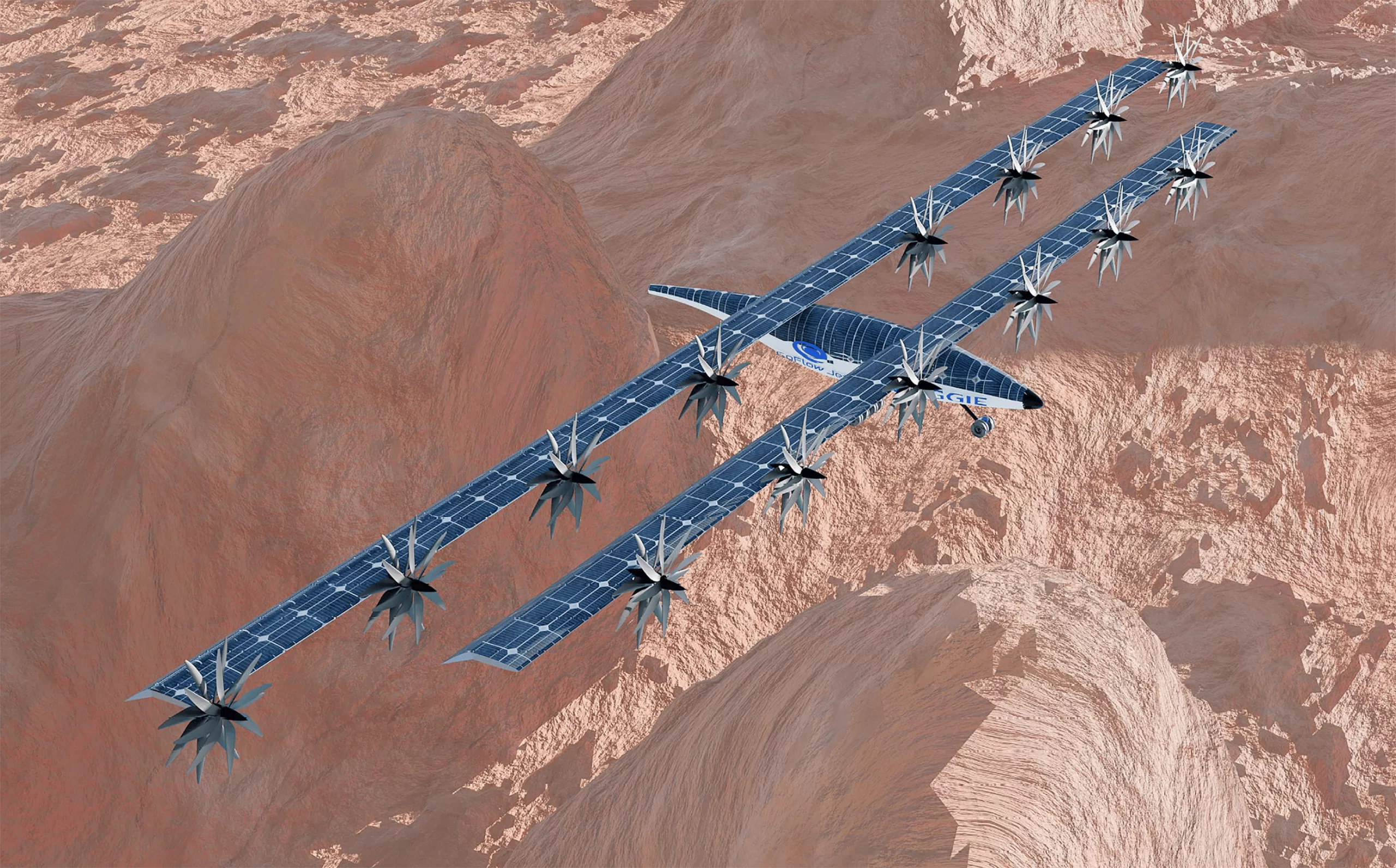The Ingenuity helicopter might be grounded, but at least it’s grounded on Mars. And soon it might have a chance to photobomb Maggie, a solar-powered aircraft designed to search for water on the Red Planet. The proposed fixed-wing plane would soar at up to 190 MPH for up to 111 miles on a full charge—nearly 10,000 miles a year—to “perform the first global-scale atmospheric mission at Mars and revolutionize our capability of exploring almost the entirety of the Martian surface.”
It is the first concept to enable ongoing exploration of this region of Mars and would provide a substantial leap in capability for NASA’s exploration of the Red Planet. The attractiveness of airborne missions on Mars has been amply demonstrated by the Ingenuity helicopter. MAGGIE would be similarly engaging to the public, both in its audacity, and in the variety of environments it could explore, study, and image. The technology would also enhance VTOL aircraft technology on Earth and other planets.
Maggie (“Mars Aerial and Ground Intelligent Explorer”) is one of the NIAC 2024 entries, which also include an inferometry system on the Moon, a more extensive hunt for alien life on Mars, and a far-fetched plan to swarm Alpha Centari with picospacecraft.
Given extreme constraints on launch mass (grams), onboard power (milliwatts), and coms aperture (centimeters to meters), our team determined in our work over the last 3 years that only a large swarm of many probes acting in unison can generate an optical signal strong enough to cross the immense distance back to Earth. The 8-year round-trip time lag eliminates any practical control by Earth, therefore the swarm must possess an extraordinary degree of autonomy, for example, in order to prioritize which data is returned to Earth. Thus, the reader will see that coordinating the swarming of individuals into an effective whole is the dominant challenge for our representative mission to Proxima Centauri b. Coordination in turn rests on establishing a mesh network via low-power optical links and synchronizing probes’ on-board clocks with Earth and with each other to support accurate position-navigation-timing (PNT).
Solar-powered aircraft over Mars: as real as any memory in your head!

